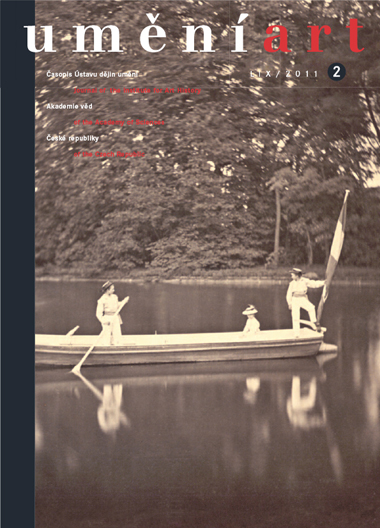Petr Uličný
Kristus v pohybu. Přemístitelné objekty v liturgii středověkých Čech
This article concerns itself with the study of the dramatic elements in the mediaeval liturgy in Bohemia and the use of mobile statues of Christ or the symbols of Christ (the host, the cross). It focuses on those feasts in the liturgical calendar that were dramatized: leading the ass on Palm Sunday, depositing the host, the cross, or the body of Christ into the Lord's Sepulchre on Good Friday and their retrieval before the play of Visit to the Sepulchre on Easter Monday, and finally raising the statue of Christ on Ascension Day. The rubrics of St Vitus Cathedral at Prague Castle indicate that on Palm Sunday a live ass used to be led here, and from the 14th century this practice was replaced by a statue of Christ on an Ass, which in 1421 was toppled from the cathedral gallery by revolting Prague citizens. The only such statue that has survived to date comes from the commandry of the Order of the Knights of St John in Strakonice. A statue in České Budějovice dating from around 1370 represents the corpora placed in the sepulchre. Written records attest to the use of such statues in the Monastery of St Thomas in Malá Strana in Prague and in two churches in Olomouc. Also from the Olomouc region are two statues of Christ that have movable arms. The oldest of these statues, which could be removed from the cross and placed in the Easter Sepulchre, is from the Church of St Benedict in Hradčany in Prague and dates from around 1350. A pieta in Lásenice also has a detachable Jesus figure with a movable arm. The only portable Holy Sepulchre documented in Bohemia was in the Cathedral of St Barbora in Kutná Hora, it dated from 1464 and was equipped with wheels for portability. The Bohemian example may have been the inspiration for the Czech-born sculptor who carved the entirely transparent Sepulchre for the Busmannkapelle of the Franciscan monastery in Dresden, which was evidently based on the wooden, portable model. The raising of statues on Resurrection Day is illustrated by one such event in Prague in 1509 in the Church of St Thomas in Malá Strana.
Full-text in the Digital Library of the Czech Academy of Sciences:
https://kramerius.lib.cas.cz/uuid/uuid:ce311ef0-3a06-1802-30f4-51b9e4e44828
< back

